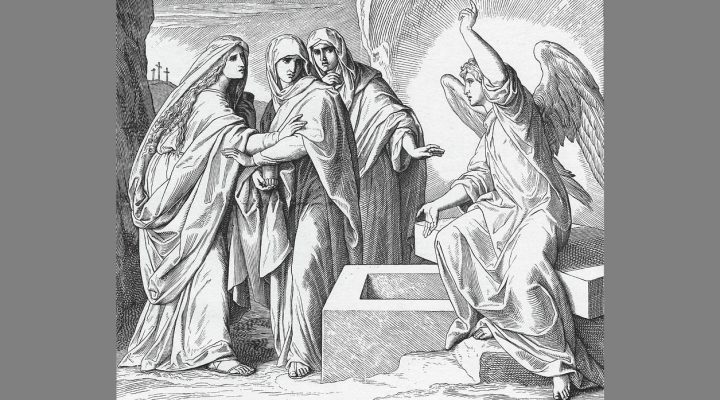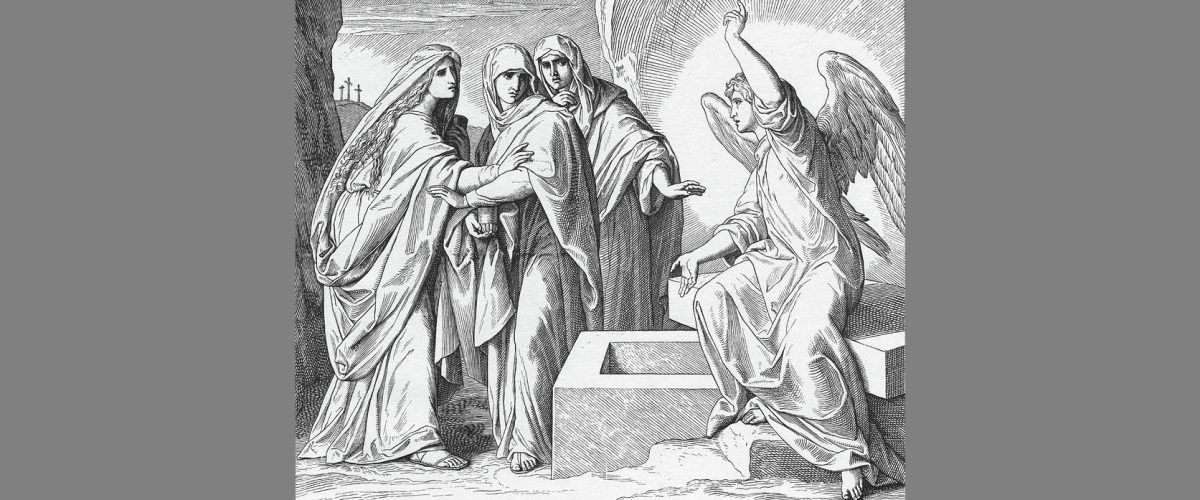This is the week upon which the entire Christian religion hinges: the death and resurrection of Jesus, the two observances that most fully embody the hope of God’s saving grace to humanity.
In the celebration of Easter, the Christian story offers hope because death is defeated in the resurrection of Jesus. Pastors worldwide will proclaim the message of God’s definitive “no” to the ravages of death from the pulpit on Easter Sunday. Yet, in some quarters, there is debate about the legitimacy of the women pastors who will stand before their congregations and proclaim the living Christ.

James Willis III
A recently circulated 219-page compilation of female Baptist ministers from a pastor named Mike Law seeks to urge the passage of a Southern Baptist Convention constitutional amendment to prohibit women from preaching. To date, his letter requesting this amendment has been signed by more than 2,000 “pastors/elders in SBC churches and professors in SBC seminaries.”
One of the female pastors listed in that document is a friend of mine from school. I have zero doubt she proclaims the gospel with as much integrity, genuineness and authority — yes, authority — as any man.
“That textual evidence strongly supports women preaching the gospel.”
Thankfully, there is pushback on this issue, including several articles and op-eds in this publication. I would like to add to their voices by arguing that textual evidence strongly supports women preaching the gospel. In the life and ministry of Jesus, as well as throughout the entirety of Christian history, women have played a crucial role in the spread of the gospel.
Women are present throughout the Gospels as close companions and friends of Jesus, including Joanna, the wife of the manager of Herod’s household, and Susanna who financially supported his ministry “out of their own means.” Jesus entrusted his teachings to the women who traveled with his group and with whom he visited, like Martha and her sister Mary who “sat at the Lord’s feet listening to what he said.” Women were integral to the details preserved about Jesus’ life and ministry.
At the end of Jesus’s life, when he hung on a Cross dying, and he looked down, who did he see? Were his male disciples there to comfort him as his body gave out from the extremes of physical abuse and torture? No, his male companions already had fled, rightly concerned about their own safety. He did see a few of his female companions, though.
John’s Gospel recounts how three women — his mother, his mother’s sister and Mary Magdalene — stood at the foot of the Cross. We can only imagine the anguish these women experienced as Jesus was in his death throes. Women experienced the gruesome state execution of their son, rabbi and friend.
On Easter morning, it also was women who had the first experience of the good news. Each Gospel details how women first received the knowledge of the resurrection. Matthew’s account even says Jesus greeted Mary Magdalene and Mary and they “clasped his feet.”
I’ve always been struck by Mary Magdalene’s despondency at the missing body: “’They have taken my Lord away,’ she said, ‘and I don’t know where they have put him.’” The reader can almost feel the next words leap off the page in a moment of exhilaration: She encounters a man whom she doesn’t recognize at first but then “Jesus said to her, ‘Mary.’ She turned toward him and cried out in Aramaic, ‘Rabboni!’ (which means ‘teacher’).”
The relief, the exhilaration, the joy, they are Mary’s. And with that, she returns to the other followers of Jesus to proclaim his resurrection.
If you line up the four Gospels side-by-side, they have little consistency when it comes to the content that flows through each of them. To be sure, Christians often think of the Gospels as four versions of the same story. This is simply not the case. However, one thing they do all have in common is a shared witnessing that demonstrates women were present for the resurrection (Matthew 28: 1-10; Mark 16: 1-8; Luke 24: 1-12; John 20: 1-18).
“The claim and the truth of the resurrection was entrusted to women first.”
Let me be clear: The claim and the truth of the resurrection was entrusted to women first. The angel in the tomb, the representative of God, saw fit to lay bare the most precious knowledge — the utter reversal of the condition of death — to a woman. It was only later that the incredulous men came around to the possibility of resurrection. Thomas, forever enshrined as the doubter, has to touch Jesus to believe the truth Mary accepted in her experience.
As the SBC mulls over this proposal, they should continue to look to the Scripture for guidance. That same Scripture supports the claim that women were the inheritors of God’s gift of hope in the resurrection. Yes, the re-consideration of long-held beliefs and traditions is difficult. But it is also necessary for spiritual growth and for carrying on the good news.
God’s definitive “no” to the ravages of death was first given to women, so they should be entrusted to proclaim that same joyous news.
James Willis III is an assistant professor of practice for religion in the department of philosophy and religion at the University of Indianapolis. He holds a bachelor’s degree in theology from Roanoke College in Virginia, a master of literature degree in divinity from the University of St. Andrews in Scotland, and a Ph.D. in comparative religion from King’s College London in England. He is a Public Voices Fellow with The OpEd Project.
Related articles:
Those who say women cannot be pastors are ‘wrong,’ open letter asserts
If you’re going to quote 1 Timothy 3:2, be sure to read Exodus 20:17 | Opinion by Brad Bull
A response to ‘The List’ | Opinion by Alice Cates Clarke
I’m one of the female pastors on the SBC’s hit list | Opinion by Carlisle Davidhizar
What Mike Law got right | Opinion by Jennifer Hawk
How dare they publish that list | Opinion by Arthur Wright Jr.


